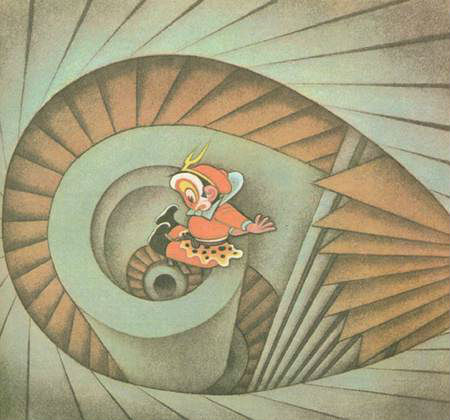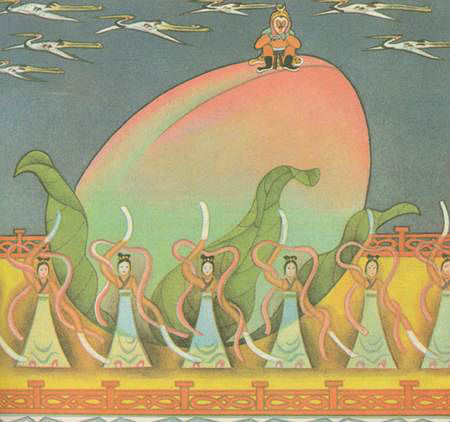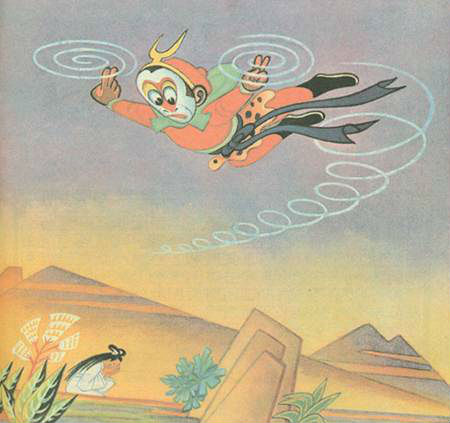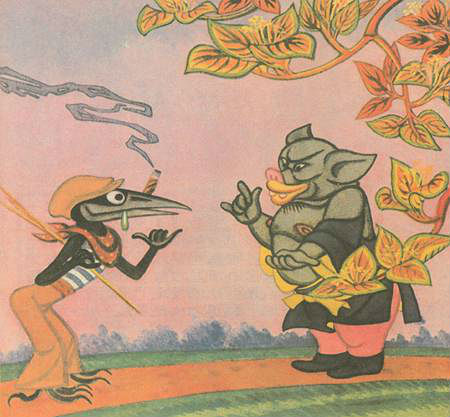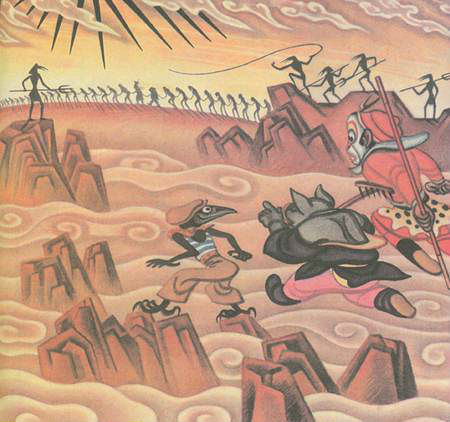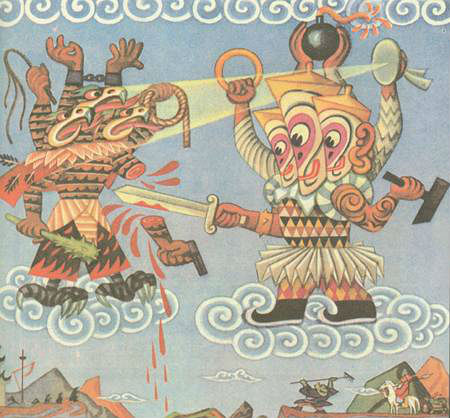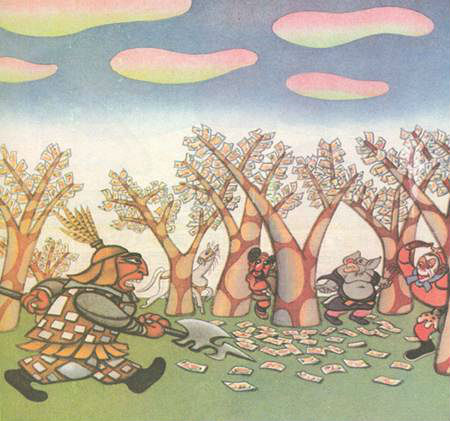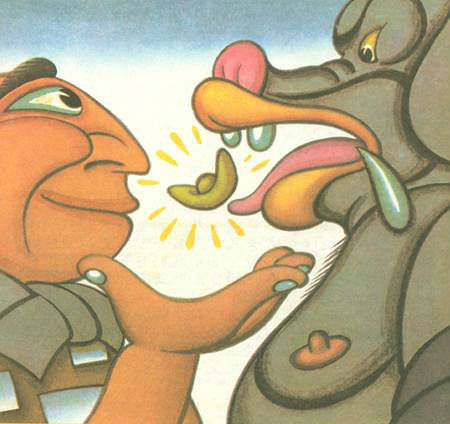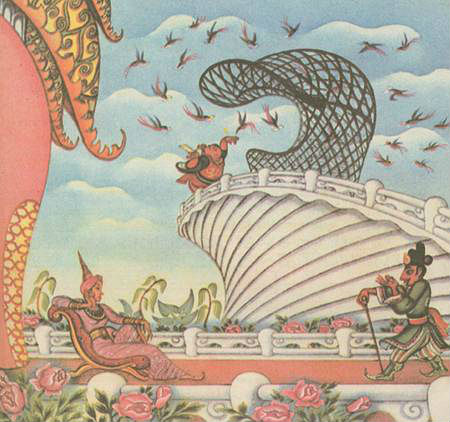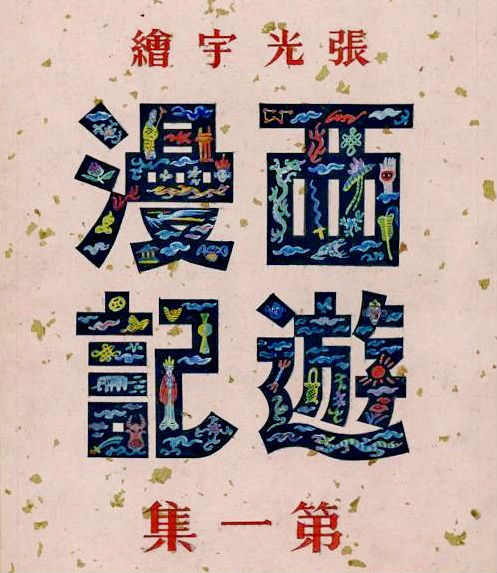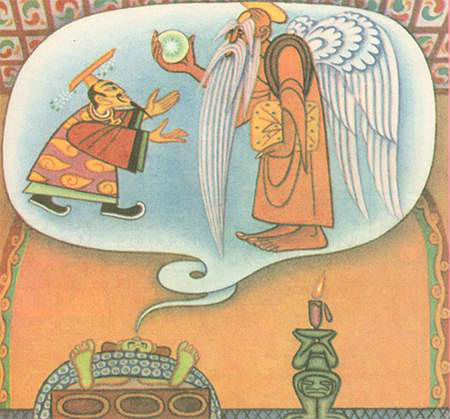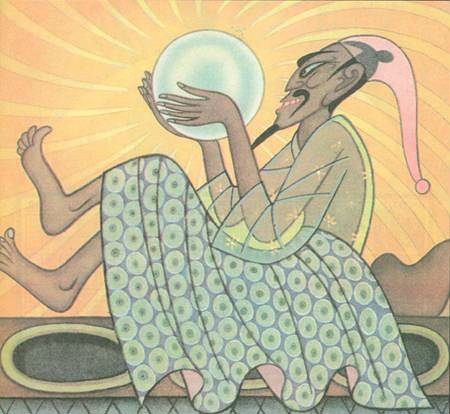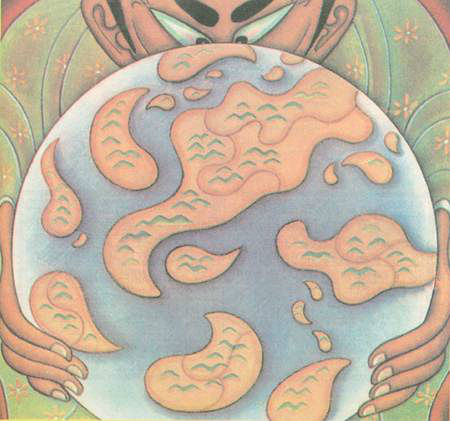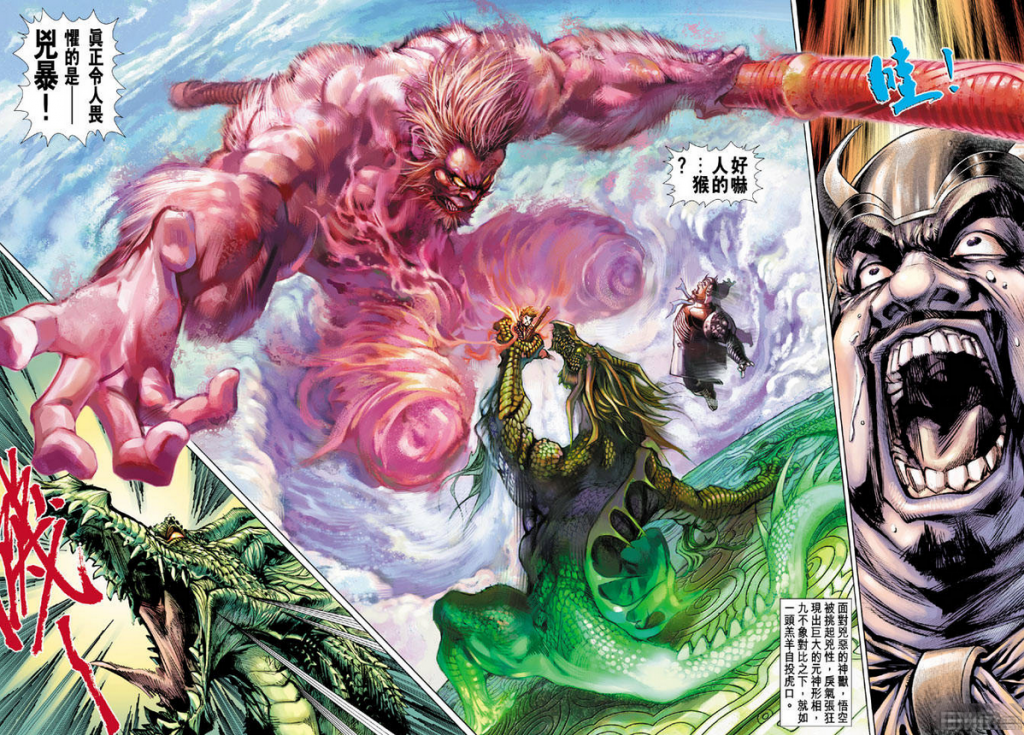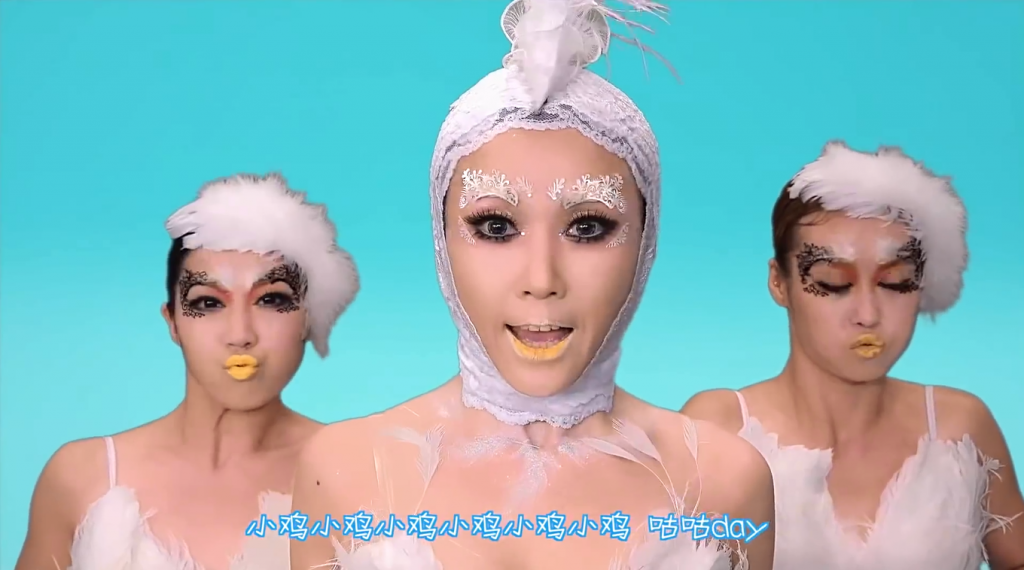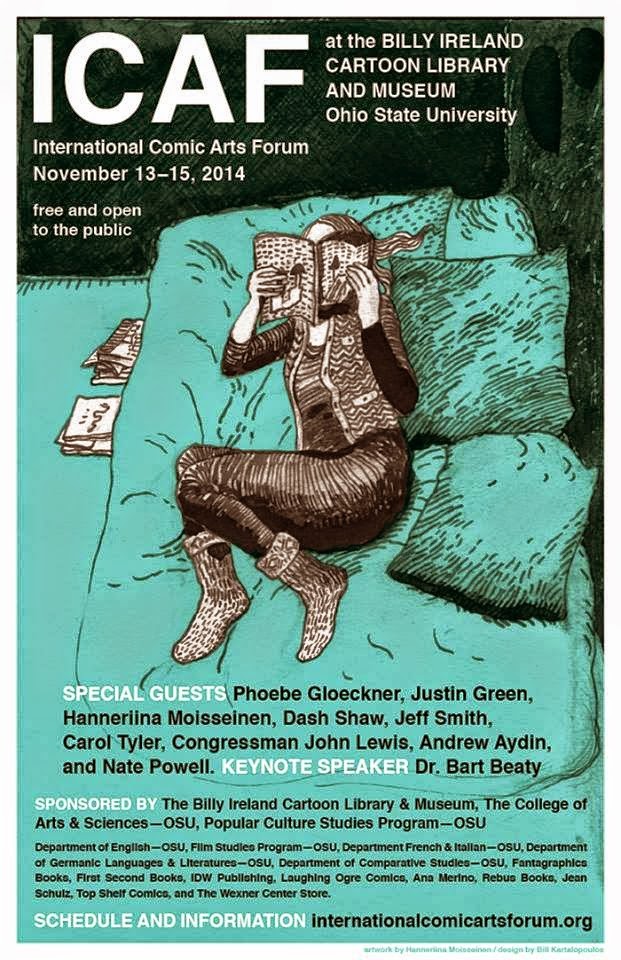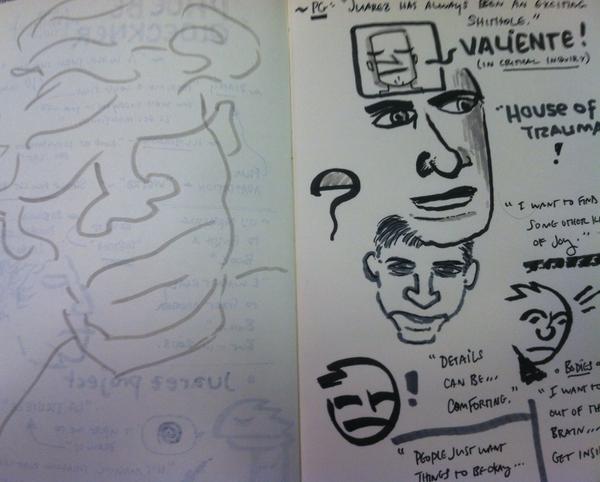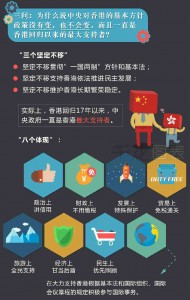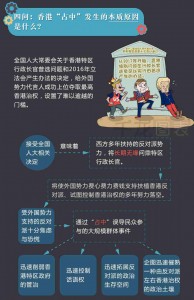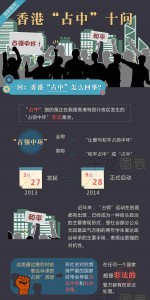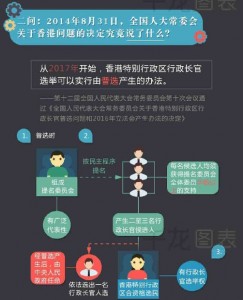Zhang Guangyu’s 張光宇 (1900-1965) overlooked masterpiece, Manhua Journey to the West 西遊漫記 was originally created in the fall of 1945 while Zhang was living in the wartime capital of Chongqing. Deeply critical of the ruling KMT government, it was eventually banned and did not see print for another 13 years. For the sake of introducing Zhang’s out-of-print work to a larger audience, I’ve taken the liberty of translating the entire 60 page comic into English and will be posting it in installments on my blog over the next several weeks.
In part 4 of this 6 part translation, Monkey narrowly avoids a full-body haircut only to land on the giant Peach of Immortality, where he finds himself surrounded by dancing immortals and fairies. Monkey concludes that he has somehow arrived back at the Southern Heavenly Gates. Princess Iron Fan appears in the middle of the festivities and asks Monkey to dance and rather surprisingly, given his characteristic lack of interest in the opposite sex in the original novel, he agrees. After their dance, Princess Iron Fan leads Monkey into the garden to “whisper sweet nothings among the grapevines.” Just when things are starting to heat up though, an unpleasant surprise soon cools Monkey’s ardor…
31. 悟空从那美女剪刀下挣扎脱身,踉踉跄跄逃出门外,回头一看见有“美发宫”三个字写着,他方[才?]明白道:“老孙的毫毛根根都有用处,如果把他剃净岂不难看,而且 世界哪有光皮猴孙,幸亏老孙机警逃得出来,否则就大上其当了!”说着他倒反而得意起来,反背着手洋洋地沿走廊踱过去,忽然脚底下的地板自己转动起来,一霎 时像旋转乾坤般的转得孙猴儿头昏眼花,手足无措,翻了不知多少筋斗。
Sun Wukong wrestled free from the woman with the scissors, stumbling and staggering out of the door, he looked back to see the words, “Palace Hairdressers,” leading him to say, “Every hair of Sun Wukong’s downy fur has its use, if you shaved me bare, wouldn’t I look terrible? Besides, who’s ever heard of a hairless monkey? Good thing that the vigilant Sun managed to escape, otherwise I would have fallen into her trap!” Having said this, he began to feel full of himself, strolling down the corridor with his hands clasped behind him, smiling contentedly, when suddenly the floor beneath his feet swiveled and with a whoosh! Sun Wukong spun around like a yin yang sign, leaving him dizzy with blurred vision. He was completely helpless, somersaulting into the void who knows how many times.
32. 转动渐渐的和缓下来,悟空耳朵边听得音乐幽扬,觉得身子又滑进一个地方,又听见拍手喝彩的声音:“好一个偷桃的猴子来了!”睁眼一看原来置身在一只大蟠桃 上,四面环绕着诸天大罗神仙,上面端坐着西王母仙驾,恍然悟到:“怎么又会来到南天门咧?”一下子一列彩衣仙女围着蟠桃又跳起舞来。
The spinning gradually lessened, and Wukong began to hear the wafting melodies of music. He perceived that he had arrived in a new place, hearing the sound of applause: “A peach stealing monkey has arrived!” Wukong opened his eyes to discover that he was lying on top of a peach of immortality, surrounded from four sides by gargantuan Daoist immortals, headed by the Queen Mother of the West. Suddenly becoming aware of where he was, Wukong said to himself, “How come I’m back at the Southern Heavenly Gates again?” In a flash, a row of fairy maidens in colorful gowns surrounded the peach of immortality and began to dance.
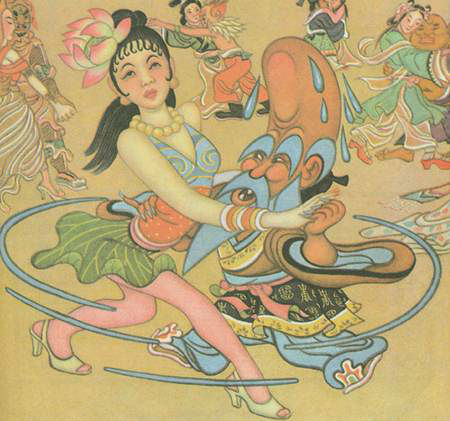
33. 彩衣仙女舞罢,又是一阵掌声,音乐转换调子,众仙翁仙姑都一对对拥抱着作蝴蝶仙舞,其间
南极仙翁与何仙姑舞得尤其精彩。
When the fairy maidens had finished dancing, there was another burst of applause, and tune changed, and each of the elderly immortals was paired with a female immortal, pressing close together and doing the Butterfly Dance of the Immortals. Among them, the immortal of the South Pole and the fairy maiden He were particularly splendid dancers.
